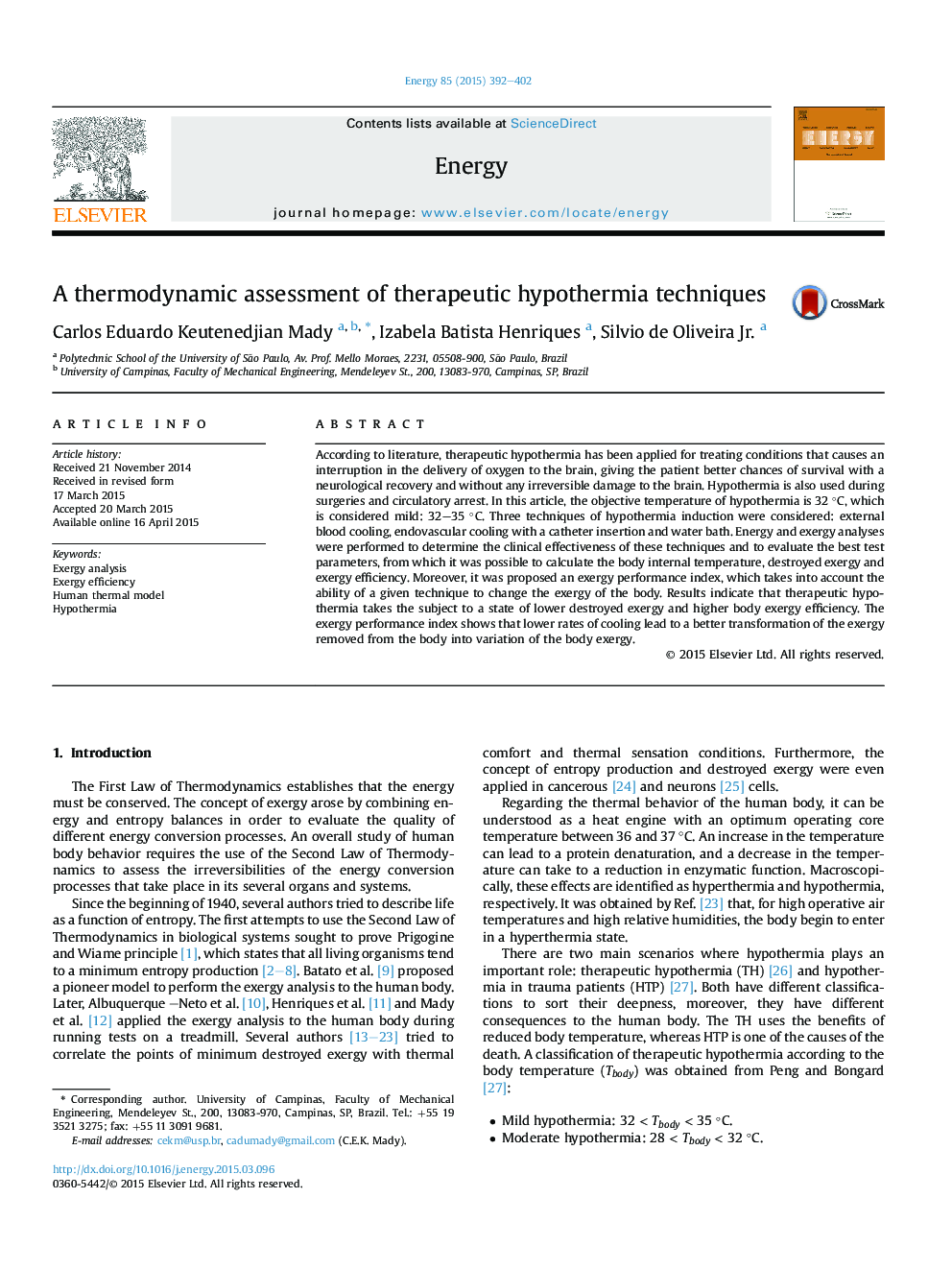| Article ID | Journal | Published Year | Pages | File Type |
|---|---|---|---|---|
| 1732086 | Energy | 2015 | 11 Pages |
•Thermodynamic study of the human body under mild hypothermia.•Energy and Exergy analysis were applied to the human thermal model.•Calculation of destroyed exergy, exergy efficiency.•Hypothermia led the body to a state of lower destroyed exergy.•EBC achieved higher values of destroyed exergy and exergy efficiency.
According to literature, therapeutic hypothermia has been applied for treating conditions that causes an interruption in the delivery of oxygen to the brain, giving the patient better chances of survival with a neurological recovery and without any irreversible damage to the brain. Hypothermia is also used during surgeries and circulatory arrest. In this article, the objective temperature of hypothermia is 32 °C, which is considered mild: 32–35 °C. Three techniques of hypothermia induction were considered: external blood cooling, endovascular cooling with a catheter insertion and water bath. Energy and exergy analyses were performed to determine the clinical effectiveness of these techniques and to evaluate the best test parameters, from which it was possible to calculate the body internal temperature, destroyed exergy and exergy efficiency. Moreover, it was proposed an exergy performance index, which takes into account the ability of a given technique to change the exergy of the body. Results indicate that therapeutic hypothermia takes the subject to a state of lower destroyed exergy and higher body exergy efficiency. The exergy performance index shows that lower rates of cooling lead to a better transformation of the exergy removed from the body into variation of the body exergy.
